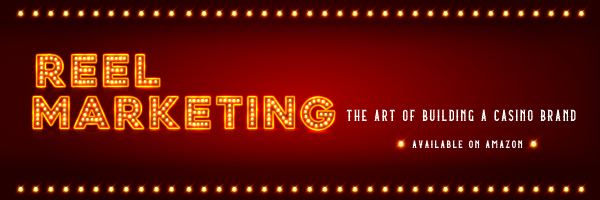Earlier this year, we talked about how to thrive with less. We have to be judicious with our spending, but we have always tried to do that. Right? So, rather than saying again that we need to learn to do more with less, let’s talk about the amplification of our efforts.
 Much in the way a home cook may use specific ingredients to stretch their budgets and recipes, a strong brand strategy can do the same for all your marketing efforts.
Much in the way a home cook may use specific ingredients to stretch their budgets and recipes, a strong brand strategy can do the same for all your marketing efforts.
There are a few things we already know and can agree upon.
- We know a brand helps to distinguish us from our competition.
- We know we need that brand to fit the promise we can deliver.
- We know it should be consistent.
Most of all, we all know we need a strategy to precede tactics. However, the brand strategy is a little “more” than what is typically thought of when you hear the word “brand” and a bit different than the overall business strategy.
Some think of the strategies for a business, a brand, and marketing as cascading steps. I like to think of them more like a spiral design where you cannot see the beginning of one or the next strategy, and every piece is in support of the other.
 Everywhere a Strategy
Everywhere a Strategy
The business strategy sets a direction for the operation and the path you will need to (or should) take. The brand strategy is about how you will position yourself in the mind of guests, team members, and stakeholders. A great brand strategy is so much more than graphics and taglines. If your brand strategy is properly formulated, it can serve as your roadmap to company growth. It will be in support of the business strategy but will also show you how you
- will operate the day to day business,
- evaluate opportunities and
- view the world in relation to your operation.
A great brand strategy is meant to guide more than the surface of the brand. It should guide the growth of the business. It should be understandable by anyone charged with decision-making. It should also be easily distilled and understood by everyone in the organization, whether they have customer-facing roles or not.
More importantly, a great brand strategy can prevent unnecessary expenses because you are extremely focused on the path. Three of the most significant pieces of the casino marketing budget quickly benefit from a great brand strategy.
Advertising
Advertising is probably the most obvious. Yet, sadly, I feel like it is the one that seems to slip through the cracks much more quickly because we often approach it as a bit of a checklist.
Logo. Check. Tagline. Check. Commonly-used imagery. Check.
However, I never fail to see examples of competitors whose advertising looks very similar, with the only differentiation being the logo. Casinos seem to be notorious for this. Perhaps it’s because we share such common features.
It feels like perhaps the messages have not been based on a brand strategy but rather a creative direction.
So, how do you overcome this challenge?
As the person influencing or in charge of the advertising, you should always think about the overall strategy and the goals for how a potential guest develops their pre-visit expectations and whether that meets the purposes of your brand strategy.
In a way, you work backward, starting with the creative brief.
- We want (target audience) to (action)
- Because (reasons)
Then, go through the process in a forward direction to check problems.
- Our overall goal is (business strategy)
- We do this by (brand strategy)
- So, we’ve created this tactic that will cause our (target audience) to (action) to help us get closer to our goal.
This last step will allow you to evaluate whether the program (or programs) you are communicating will be additive or not to your overall strategy.
Direct Marketing
Funny thing how casino operations have a way of looking at direct marketing and advertising as two separate silos.
Direct Mail IS Advertising
Most look at direct marketing as the delivery mechanism we use for offers and return visits. There is no denying that view or opinion. However, the vast majority of the “real estate” in a mailer has been historically dedicated to selling and enhancing the desire to return.
Yet, once again, we can take all of the mailers for the competitors in a market, lose the logo, and they can all look pretty much the same.
Although research has repeatedly shown us that our customers are mostly just interested in the offers and use them to decide their visitation schedule, we would never consider just sending coupons to them with no creative!
Then, why are we not considering the brand strategy in the creation of our mail?
Recently we worked with a client who started to see a difference in the guests they saw coming through the door. They wanted to make some changes to the direct mail based on this one factor. We talked through their brand strategy and how we thought these new guest might fit into it. Once we did this, we realized the needed changes were less overhaul and more of an update or a tweak to the look and feel. We had to honor the brand because it was ultimately the reason for the new visitation patterns.
This case is an excellent example of how a strategy can keep us focused. It is effortless to see a difference and quickly react rather than see smaller, more nuanced, and brand-appropriate shifts.
Reinvestment in the Customer AND the Brand
Reinvestment is a tricky little marketing tool. We get “high” on the redemptions, and before we realize it, we’re upside down in one or more segments or programs – the kudzu of our marketing garden. Originally introduced to help with a problem, and now quickly taking over gardens around the world.
We start with honest goals. We review and follow the math to create our offers and point values. Then, the competition does something dumb. Or we’re shut down for months and have to figure out how to drive the most revenue. The more we feel pressure from competitors, or as guests start changing patterns, the creep begins.
Sometimes we notice the creep quickly and take a step back to evaluate. More often, it gets away from us, and we find ourselves trapped between making the needed cuts and disenfranchising our guests.
Wouldn’t it be wonderful if we did not have to buy as much of our business? Wouldn’t it be wonderful if guest CHOSE to visit simply because they WANT the experience?
My glasses do not have rose-colored lenses. I know reinvestment is a necessary part of our efforts. I am just saying we have many opportunities to draw people in “just because” they might want to visit. We need a clear vision and a strategy that we all stick to.
Think about the new visitors we’ve seen in our casinos as we reopened. As yourself (or them) why they chose to visit you rather than the competition. Chances are, you will find some brand gold that you can lean into.
The Story of the Brand Strategy
I once worked with a regional gaming company. We had a variety of properties in our portfolio. If you compared them side by side by side, you would quickly find that some were lacking compared to their sister properties and (sometimes) the market in general.
We could have tried to sell some. We could have just sucked it up and spent millions of dollars in capital, bringing them all to the same level, but the reality is we may not have seen the type of ROI we needed for the investment.
I was hired at the time the company was embarking on new developments. There was a deep desire to establish the brand in a whole new way. The awful truth was that there was a reliance on a theme, and it was looked at as “the Brand.” The strategy document I was given to work from was odd and confusing to me, and I was the brand leader!
There was a definite vision for the company. There was a deep desire to move forward, but emotionally many were tied to a theme that had become signature for nearly 20 years. At best, it was a difficult time for the brand. At worst, it was splintered, confused, and based on a group of people sitting in a conference room. Truth be told, no one was at fault here. They had skipped the brand strategy step because they were in revenue mode.
We had to take a moment and consider our brand strategy. I was the person charged with the brand, but I, too, fell into the trap of day-to-day. I had become very focused on the creative rather than the path our brands could lead us. We were cranking out creative elements that everyone wanted to change (for whatever valid reasons they may have had). It took so much of my time that I never stepped back to define the brand strategy.
We had to take a few days with no distractions to review the research we had and analyze the markets and the economic trends. So, a small group of us came together initially on a Saturday when the phones would be ringing and no one would be checking emails and texts.
We took a more realistic view of the properties and what we saw as our future. We considered a few different approaches the brand could take. Then we shared everything with key stakeholders.
Two Halves Would be Greater Than a Whole
We ultimately decided on a bifurcated brand strategy that would allow all of our locations to stand out from the competition and own their uniqueness. One brand would embrace their unique fun flair, while the other would continue to grow to be destinations.
Not only did this aid us in telling our story to the investment community, but it also painted a clear picture for all of our team members to truly understand the brands they would represent.
Your Next Steps
This type of exploration could be the difference in the long life of your brand and company. You could work internally or partner with people like me (shameless, I know). Whatever your path, nothing will be as valuable as understanding your brand beyond the logo.
Facing a new year that is hopefully less influenced by a pandemic, I am still figuring out what “normal” is and what it will become. Strategies may evolve and grow, but the need and usefulness of a well-defined and understood strategy will always be a must-have for marketers and the industry. This understanding will amplify all of your marketing efforts and operations.
Resolve to define your brand strategy in 2021.




Recent Comments